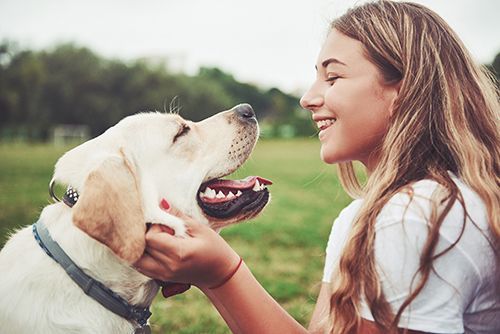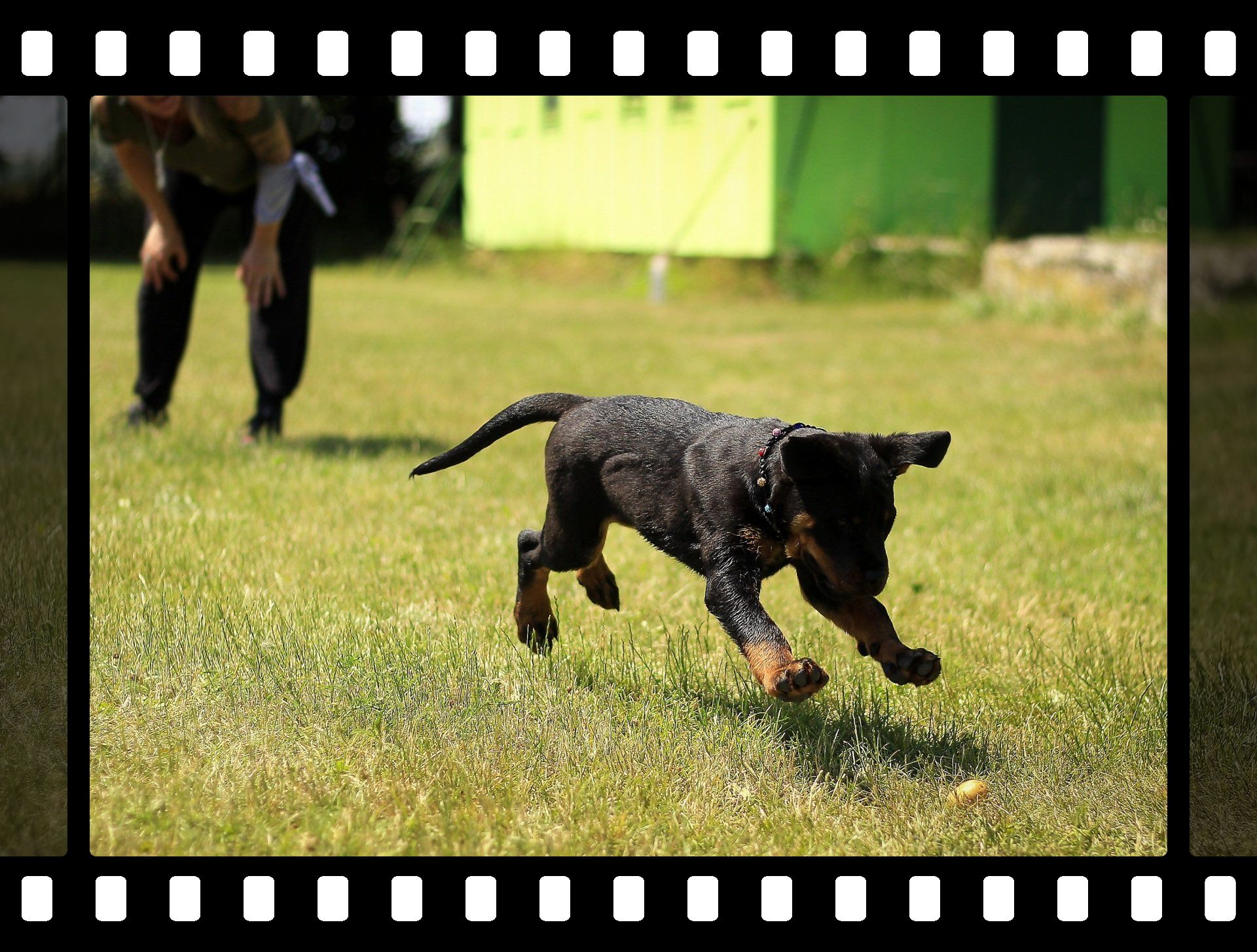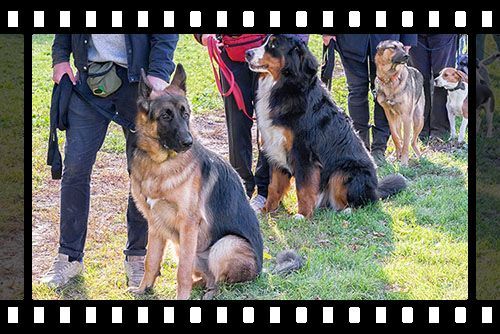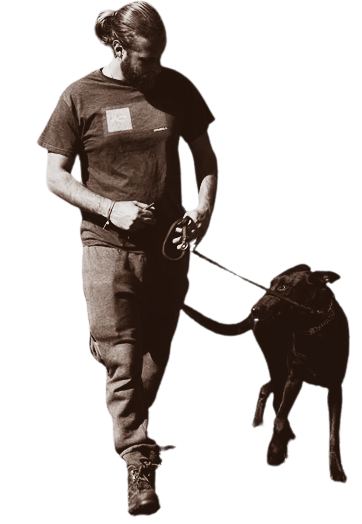The Key to Successful Dog Training: Understanding Canine Behavior
If you've ever found yourself wondering why your dog behaves the way it does, you're not alone. Many dog owners are left scratching their heads at their pet's antics. But here's the good news: understanding your dog's behavior is the key to effective training.
When you understand why your dog behaves the way it does, you can tailor your
dog training methods to suit its needs. This makes the
dog obedience training process more effective and enjoyable for both you and your furry friend. So, let's dive into the fascinating world of canine behavior and discover how you can use this knowledge to train your dog effectively.
The Basics of Dog Behavior
Canine Communication - Decoding Dog Communication: Body Language and Vocalizations
Dogs may not speak our language, but they're quite the chatterboxes in their own way. They use a variety of signals to communicate, from wagging tails to playful barks. Understanding these signals is the first step in effective dog training.
Body language is a big part of how dogs communicate. For example, a wagging tail doesn't always mean a happy dog. The speed and direction of the wag can indicate a range of emotions, from excitement to fear. Similarly, a dog's ears can tell you a lot about its mood. Erect ears often mean the dog is alert and focused, while flattened ears can indicate fear or submission.
Vocalizations are another key aspect of canine communication. Dogs use a range of sounds, from barks to whines, to express their feelings. For instance, a high-pitched bark often indicates excitement, while a low growl can be a warning sign.
Understanding these signals can help you respond appropriately to your dog's behavior, making your
training sessions more effective.
Social Behavior - The Social Life of Dogs: Understanding Pack Mentality and Socialization
Dogs are social animals, and understanding their social behavior is crucial for effective training. Dogs learn a lot from interacting with other dogs, and these interactions can shape their behavior.
One key aspect of canine social behavior is the pack mentality. Dogs are descendants of wolves, and they've inherited the wolf's pack-oriented behavior. In a pack, there's a clear hierarchy, with each dog knowing its place. Understanding this can help you establish your role as the leader in your dog's eyes, making your training efforts more effective.
Socialization is another important aspect of a dog's social life. Socializing your dog involves exposing it to a variety of experiences, people, and other dogs. This helps your dog learn how to behave appropriately in different situations. A well-socialized dog is usually easier to train and less likely to exhibit bad behavior.
Instinctual Behavior Patterns
Prey Drive and Predatory Behavior - Taming the Hunter: Managing Your Dog's Prey Drive
Ever wondered why your dog chases after squirrels in the park or pounces on its favorite toy? That's the prey drive in action. This instinctual behavior pattern is a throwback to their ancestors, who had to hunt to survive.
Understanding your dog's prey drive can help you manage it effectively during training sessions. For instance, you can channel this drive into games that mimic hunting, like fetch or tug-of-war. This not only keeps your dog entertained but also helps to reinforce good behavior.
However, it's important to remember that a strong prey drive can sometimes lead to unwanted behaviors, like chasing after cars or other animals. In such cases, obedience training can be particularly useful. Teaching your dog basic commands like "sit", "stay", and "come" can help you keep its prey drive in check.
Territorial Behavior - "Marking Territory: Addressing Your Dog's Territorial Behavior
Dogs are naturally territorial creatures. They have an innate desire to protect their home and family. While this can be a beneficial trait, it can also lead to problems if not properly managed.
Territorial behavior in dogs can manifest in several ways, including barking at strangers, marking territory, or even aggression. Understanding these behaviors is the first step in addressing them.
Training your dog to behave appropriately in its territory involves teaching it to respond to commands and to understand that not all intrusions are threats. For instance, teaching your dog the "quiet" command can help control excessive barking. Similarly, socialization can help reduce territorial aggression by teaching your dog that new people and dogs are not always threats.
Remember, patience is key when dealing with territorial behavior. It's a deeply ingrained instinct, and changing it will take time and consistent training.
Behavioral Issues and their Underlying Causes
Separation Anxiety - Alone but Not Afraid: Dealing with Your Dog's Separation Anxiety
If your dog turns into a furry wrecking ball every time you leave the house, it might be dealing with separation anxiety. This common behavioral issue can make your dog feel scared and anxious when left alone, leading to unwanted behaviors like excessive barking, chewing, or even attempts to escape.
Understanding and addressing separation anxiety starts with recognizing its signs. These can include excessive salivation, pacing, and destructive behavior. Once you've identified the issue, you can start training your dog to handle your absence.
One effective method is to start training with short absences and gradually increase the time you're away. Reward your dog for calm behavior, and avoid making a big fuss when you leave or return home. This can help your dog learn that your departure isn't something to fear.
Aggression - Taming the Beast: Understanding and Managing Dog Aggression
Aggression in dogs can be a serious issue, posing a risk to both humans and other dogs. It can manifest in many ways, from growling and snapping to biting. Understanding the causes of aggression is the first step in managing it.
Aggression can be triggered by a variety of factors, including fear, territoriality, or even pain. Identifying these triggers can help you manage your dog's aggression effectively. For example, if your dog is food motivated and shows aggression when eating, you can train it to wait calmly while you prepare its food.
Remember, dealing with aggression often requires professional help. If your dog shows signs of aggression, it's a good idea to consult a dog trainer or behaviorist.
Fear and Anxiety in Dogs
Common Fear Triggers - "Scaredy Dog: Understanding and Addressing Your Dog's Fear Triggers
Just like humans, dogs can be afraid of many things. Common fear triggers can include loud noises, strangers, or even specific objects like vacuum cleaners. These fears can lead to unwanted behaviors, such as hiding, shaking, or even aggression.
Understanding your dog's fear triggers is the first step in helping them overcome their fears. Once you know what scares your dog, you can start training it to respond differently. This might involve gradually exposing your dog to its fear triggers in a controlled way, while rewarding it for calm behavior. This process, known as desensitization and counterconditioning, can be very effective in reducing fear responses.
Dealing with Separation Anxiety - Home Alone: Training Your Dog to Handle Separation Anxiety
We've already touched on separation anxiety, but it's such a common issue that it's worth exploring further. If your dog gets anxious when you're not around, there are several strategies you can use to help it feel more secure.
One effective approach is to create a safe space for your dog in your house. This could be a crate or a specific room where your dog feels comfortable. You can make this space more appealing by adding your dog's favorite toys or a piece of clothing that smells like you.
Another strategy is to establish a predictable routine. Dogs are creatures of habit, and knowing what to expect can help reduce their anxiety. Try to stick to a regular schedule for feeding, walks, and playtime.
Remember, dealing with separation anxiety takes time and patience. But with consistent training, your dog can learn to feel more comfortable when left alone.
Understanding Canine Learning
Classical Conditioning - Pavlov's Dog in Action: The Power of Classical Conditioning in Dog Training
If you've ever heard of Pavlov's dog, you're already familiar with the concept of classical conditioning. This is a type of learning where a dog learns to associate two stimuli, like the sound of a clicker with a treat. Over time, the dog begins to respond to the clicker as if it were the treat itself.
Classical conditioning is a powerful tool in dog training. It can be used to teach your dog to associate positive experiences with certain cues or behaviors. For example, if you give your dog a treat every time it sits on command, it will start to associate sitting with getting a treat. This makes it more likely to sit when asked in the future.
Operant Conditioning - Rewards and Consequences: The Role of Operant Conditioning in Dog Training
Operant conditioning is another key concept in dog training. It involves using rewards (positive reinforcement) and consequences (like positive punishment) to influence your dog's behavior.
For example, if your dog jumps on guests, you might ignore it (a form of mild punishment) until it calms down. Once it's calm, you give it attention and praise (a reward). Over time, your dog learns that jumping leads to being ignored, while calm behavior leads to rewards.
Operant conditioning can be a very effective way to train your dog. It allows you to communicate clearly with your dog about what behaviors are acceptable and which ones aren't.
Applying Behavioral Understanding to Training
Speak Dog: Establishing Clear Communication in Dog Training
Clear communication is the cornerstone of effective dog training. It's not enough to know what you want your dog to do; you also need to communicate it in a way your dog understands.
Consistency is key here. For example, if you use the word "sit" to get your dog to sit, always use the same word for the same command. Changing commands can confuse your dog and hinder the training process.
Body language is another important aspect of communication. Dogs are very attuned to our body language, and they often respond more to our physical cues than our verbal ones. So, when you're training your dog, pay attention to what your body is saying as well as your words.
One Size Doesn't Fit All: Tailoring Training Methods to Your Dog's Needs
Every dog is unique, with its own personality and preferences. That's why it's important to tailor your training methods to suit your individual dog.
For instance, some dogs are highly food motivated, and will do just about anything for a tasty treat. Others might be more motivated by toys, praise, or the chance to play. By figuring out what motivates your dog, you can make your training sessions more effective and enjoyable for both of you.
Also, consider your dog's breed and temperament. Some breeds, like those recognized by the American Kennel Club for their intelligence and trainability, might respond well to more advanced training techniques. Others might need a more patient and gentle approach.
When to Call the Pros: Seeking Help from Professional Dog Trainers
While many aspects of dog training can be handled at home, there are times when it's best to call in the professionals. Professional dog trainers have the experience and knowledge to handle complex behavior issues and can provide guidance on the best training methods for your dog.
If your dog is showing signs of serious behavioral issues, such as aggression or extreme fear, it's a good idea to consult a dog trainer or behaviorist. They can help identify the root cause of the behavior and provide a tailored training plan to address it.
Even if your dog isn't showing serious issues, a professional dog trainer can still be a valuable resource. They can provide tips and tricks to make your training sessions more effective and can help you better understand your dog's behavior.
Remember, seeking professional help isn't a sign of failure. It's about doing what's best for your dog and ensuring they lead a happy and well-behaved life.
Conclusion - The Journey to a Well-Behaved Dog: Applying Behavioral Understanding in Dog Training
We've covered a lot of ground in this guide, from understanding the basics of dog behavior to exploring different training methods. But the key takeaway is this: understanding your dog's behavior is the first step towards effective training.
When you understand why your dog behaves the way it does, you can tailor your training methods to suit its needs. This makes the training process more effective and enjoyable for both you and your dog. Plus, it can help prevent unwanted behaviors and promote a stronger bond between you and your dog.
Training your dog isn't always easy, and it can require a lot of patience and consistency. But the rewards are well worth it. A well-trained dog is not only a joy to live with but also a happy and confident member of your family.
So, whether you're teaching an old
dog new tricks or starting training with a new puppy, remember to keep it positive, be patient, and most importantly, have fun. After all, training should be a rewarding experience for both you and your dog!












